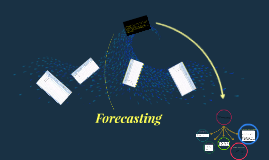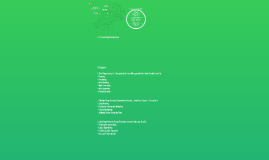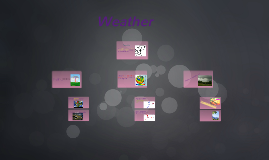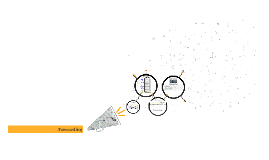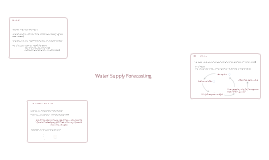FORECASTING
Transcript: 3.3 The Strategic Importance of Forecesting Good Forecasts are of critical importance in all aspect of a business. The forecast is the only estimate of demand. 2. DELPHI METHOD Associative Models- variables or factors that might influence the quantity being forecast. 3.5.2. OVERVIEW OF QUANTITATIVE METHOD 1. JURY OR EXECUTIVE 3.6.4 Exponential Smoothing -sophisticated weighed moving average forecasting method that involves very little record keeping of past data New forecast = Last period’s forecast + a (last period’s actual demand – last periods forecast) Time Series – predict on the assumption that the future is a function of the past. V. SUMMARY Qualitative approaches employ judgment, experience intuition and a host of other factors that are difficult to quantity, quantitative forecasting use historical data and casual or associative, relations to project future demand. I. INTRODUCTION II. OBJECTIVES III. MAIN CONTENT III.1 What is Forecasting III.1.1 Forecasting Time Horizons III.1.2 The Influence of Product Life Cycle III.2 TYPES OF FORECASTS III.3 THE STRATEGIC INFLUENCE OF FORECASTING III.3.1 Human Resources III.3.2 Capacity III.3.3 Supply Chain Management III.4 SEVEN STEPS IN THE FORECASTING SYSTEM III.5 FORECASTING APPROACH III.5.1 Overview of Qualitative Method III.5.2 Overview of Quantitative Method III.6 TIME SERIES FORECASTING III.6.1 Decomposition of a Time Series III.6.2 Naïve Approach III.6.3 Moving Averages III.6.4 Exponential Smoothing III.6.5 Measure Forecast Error III.7 ASSOCIATIVE FORECASTING METHODS: Regression and Correlation Analysis III.7.1 Using Regression Analysis to Forecast IV. Conclusion V. Summary 3.6.5 MEASURING FORECAST ERROR Forecast Error = Actual Demand – Forecast Value = AT-FV Five Methods: Two Categories: 1. Naïve Approach Time Series 2. Moving Average Time Series 3. Exponential Smoothing Associative Model 4. Trend Projection Associative Model 5. Linear Regression Associative Model III. What is Forecasting? high level experts/managers, combined with statistical models are pooled to arrive at a group of demand 3.6.1 Decomposition of Time Series -analyzing time series means breaking down data into components and then projecting them forward. 3.3.1 Capacity When it is inadequate, the resulting shortages can mean undependable delivery, loss of customer and loss of market share. This is exactly what happens to Nabisco when it underestimated the huge demand for its new low fat Snackwell Devils Food Cookies. Even with production lines working overtime, Nabisco could not keep up with demand, and it lost customers. When excess capacity is built, on the other hand, costs can skyrocket. 3.5 FORECASTING APPROACH FORECASTING 3.3.1 SUPPLY CHAIN MANAGEMENT Good supplier relations and the ensuing price advantage for materials and parts depend on accurate forecasts. IV. CONCLUSION Forecasts are a critical part of the operations managers’ decision. It drives a firm’s production, capacity and scheduling systems and affects the finances, marketing and personal planning. II. OBJECTIVES Products and even services do not sell at a constant level throughout their lives. Most successful products pass through 4 stages: 3.1.1. Forecasting Time Horizons 3 Categories 1. Short Range Forecast – Time span up to 1 year but is generally less than 3 months. Used for: • Planning • Purchasing • Job Scheduling • Work force levels • Job assignments • Production levels 2. Medium Range Forecast (Intermediate Forecast, - 3months to 3 years – It is useful in: • Sales Planning • Production Planning and Budgeting • Cash and Budgeting • Analyzing Various Operating Plans 3. Long Range Forecast (Generally 3 years or more in time span Used in : • Planning for new products • Capital Expenditures • Facility Location/Expansion • Research & Development Describe or explain • Moving average • Exponential smoothing • Seasonality TOPICAL OUTLINE 3.6 TIME SERIES FORECASTING I. INTRODUCTION Moving Averages -uses a number of historical data values to generate a forecast. Moving Average = Demands in previous n periods / N Where N is the number of periods in the moving average for ex. 4,5, or 6 months respectively for a 4, 5, or 6 period moving average. "It is no use saying we are doing our best. You have got to succeed in doing what is necessary..." - Winston Churchill solicits inputs from customers or potential customers regarding future purchasing plans) based on informal conversations with customers 1. Determine the use of the forecast 2. Select the items to be forecasted 3. Determine the time horizon of the forecasts 4. Select the forecasting model 5. Gather the data needed to make the forecast 6. Make the forecast 7. Validate and implement the results. 3.5.1 OVERVIEW OF QUALITATIVE METHOD QUANTITATIVE – uses variety of mathematical models that rely on historical data and (or casual) variables to forecast demand. Naïve Approach -assumes that demand in the next period will be equal to demand in the most recent period. 3.7







